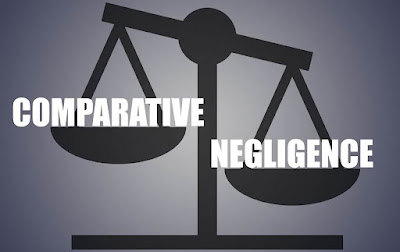Car accidents in Philadelphia, Pennsylvania, can occur at any given moment and can have severe consequences for those involved. In the process of determining fault in a car accident, the legal concept of negligence becomes relevant. Comparative negligence is a doctrine utilized to allocate liability when multiple parties share responsibility. This article aims to explain what comparative negligence entails and how it applies specifically to car accidents within the United States. If you have been injured and need immediate legal assistance visit Tyler Wilk’s Philadelphia car accident lawyers website today.
How Does Negligence Work in a Philadelphia Car Accident Claim?
Negligence refers to a notion that holds individuals accountable for their actions or lack thereof, demonstrating a failure to exercise care. In the context of a car accident, negligence typically arises when a driver fails to exercise a level of caution that any reasonable person would exhibit under such circumstances. To establish negligence, four key elements need to be proven: duty, breach, causation, and damages. A reputed legal firm with experienced car accident attorneys in Philadelphia can also offer more comprehensive guidance on the concept of negligence and the laws surrounding it.
What You Need to Know About Comparative Negligence in Pennsylvania
Comparative negligence is a principle that assigns liability based on the level of fault demonstrated by each party involved in an accident. According to this doctrine, every party involved in a car accident in Philadelphia is assigned a percentage of fault that reflects their contribution towards the incident. Comparative negligence comes into play when more than one party shares responsibility for causing an accident.
Types of Comparative Negligence
In the United States, there are two forms of negligence: pure comparative negligence and modified comparative negligence. Pennsylvania follows the latter:
- Pure Comparative Negligence
Pure comparative negligence allows a plaintiff to seek compensation from a defendant, even if the plaintiff is determined to be mostly responsible for the accident. However, the amount of compensation awarded to the plaintiff is reduced based on their degree of fault. For instance, if a plaintiff is granted $10,000 in damages but is found to be 80% at fault, their compensation would be reduced to $2,000.
- Modified Comparative Negligence
Modified comparative negligence follows specific rules depending on the jurisdiction. Two commonly used versions are referred to as the "50% bar rule" and "51% bar rule."
- 50% Bar Rule: States that employ this rule prohibit plaintiffs who are determined to be 50% or more at fault from seeking recovery. However, if a plaintiff is found to be 49% at fault or less, they may still pursue damages, which will be adjusted according to their percentage of fault.
- 51% Bar Rule: Under this rule, plaintiffs in a Philadelphia car accident claim can only seek damages if they are determined to bear 50% or less responsibility for the accident. If a person filing a lawsuit is assigned 51% or more of the blame, they won't be able to receive any compensation.
Applying Comparative Negligence to Philadelphia Car Accidents
In cases involving car accidents in Philadelphia, comparative negligence can significantly impact the outcome and the amount of compensation given to those who were injured. When multiple drivers are involved in an accident, it's crucial for you or your Philadelphia car accident attorney at Wilk Law to conduct an investigation to determine each party’s level of responsibility.
Evaluating Negligence After a Car Wreck
To establish negligence, various forms of evidence are taken into account, such as Philadelphia police reports, eyewitness testimonies, accident reconstructions, and expert opinions. These findings help determine the percentage of blame assigned to each party involved.
Distributing Damages in a Philadelphia Car Accident Claim
Once the percentages of blame have been assigned, damages are distributed based on each party’s level of responsibility. In states that follow negligence laws, even if a plaintiff is found to be primarily at fault, they may still be eligible for compensation. However, the awarded amount will be reduced proportionately according to the degree of fault. In states that adhere to modified negligence regulations, if the plaintiff’s percentage of fault exceeds a threshold set by that jurisdiction, their ability to recover damages might be restricted.
Comparative Negligence in Philadelphia Settlement Negotiations
Comparative negligence also plays a role during settlement negotiations. In situations where a Philadelphia car accident occurs, the individuals involved may opt to negotiate a settlement rather than go through the unpredictable legal process. When comparative negligence comes into play, both sides carefully evaluate their strengths and weaknesses to determine a fair amount for the settlement.
Fairness and Equity in Philadelphia Car Accident Lawsuits
Comparative negligence is a principle that seeks to assign responsibility in Philadelphia cases involving car accidents where multiple parties share fault. It is crucial for those involved in car accident litigation or negotiation in Pennsylvania to understand this concept. By taking into account each party’s level of fault, comparative negligence promotes fairness and equity when it comes to dividing damages and compensation.
To learn more about Pennsylvania’s negligence laws reach out to a knowledgeable Philadelphia car accident attorney at a law firm such as Wilk Law today.

